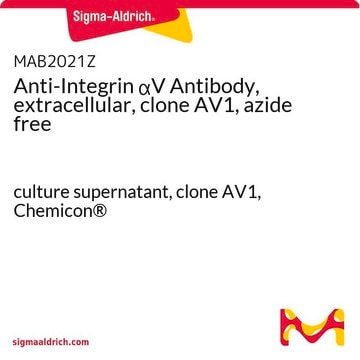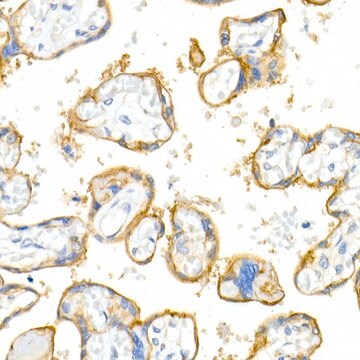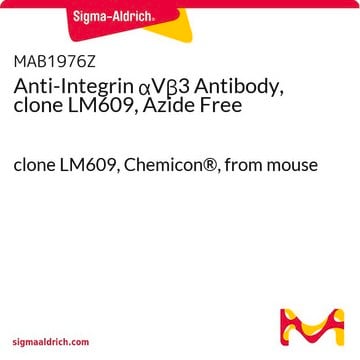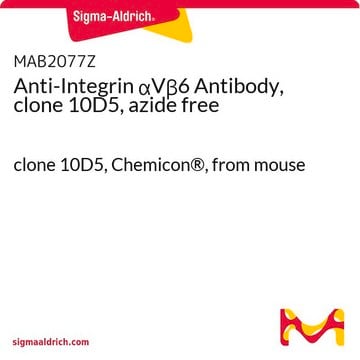AB1930
Anti-Integrin alphaV Antibody, CT, Intracellular
serum, Chemicon®
Sinónimos:
CD51
About This Item
Productos recomendados
biological source
rabbit
Quality Level
antibody form
serum
antibody product type
primary antibodies
clone
polyclonal
species reactivity
chicken, hamster, horse, goat, pig, equine, mouse, human, sheep
species reactivity (predicted by homology)
rat
manufacturer/tradename
Chemicon®
technique(s)
ELISA: suitable
immunohistochemistry: suitable
immunoprecipitation (IP): suitable
radioimmunoassay: suitable
western blot: suitable
NCBI accession no.
UniProt accession no.
shipped in
wet ice
target post-translational modification
unmodified
Gene Information
human ... ITGAV(3685)
General description
Specificity
Immunogen
Application
A 1:1,000 dilution of a previous lot was used in ELISA/RIA.
Immunoprecipitation:
5 μL of a previous lot of this antibody is sufficient to precipitate alphaV/beta1 from 5x106 cells.
Immunohistochemistry:
1:1000 dilution from a previous lot was used in immunohistochemistry. (Suggested for use an acetone fixed tissue only.)
Western blot: 1:5000.
The antibody recognizes a single band at approximately 150 kDa when denatured, but not reduced (Hirsch, 1994). Under reducing conditions this antibody recognizes two major bands of 25 and 27 kDa and, to a lesser extent, the full length 150 kDa band.
Optimal working dilutions must be determined by end user.
Cell Structure
Integrins
Quality
Western Blot Analysis: 1:500 dilution of this lot detected INTEGRIN AV light chain on 10 μg of C6 lysates.
Target description
Physical form
Storage and Stability
Handling Recommendations:
Upon receipt, and prior to removing the cap, centrifuge the vial and gently mix the solution. Aliquot into microcentrifuge tubes and store at -20°C. Avoid repeated freeze/thaw cycles, which may damage IgG and affect product performance.
Analysis Note
HT-29 colon carcinoma cells
C6 lysates.
Other Notes
Legal Information
Disclaimer
Not finding the right product?
Try our Herramienta de selección de productos.
Optional
Storage Class
10 - Combustible liquids
wgk_germany
WGK 1
Certificados de análisis (COA)
Busque Certificados de análisis (COA) introduciendo el número de lote del producto. Los números de lote se encuentran en la etiqueta del producto después de las palabras «Lot» o «Batch»
¿Ya tiene este producto?
Encuentre la documentación para los productos que ha comprado recientemente en la Biblioteca de documentos.
Nuestro equipo de científicos tiene experiencia en todas las áreas de investigación: Ciencias de la vida, Ciencia de los materiales, Síntesis química, Cromatografía, Analítica y muchas otras.
Póngase en contacto con el Servicio técnico








